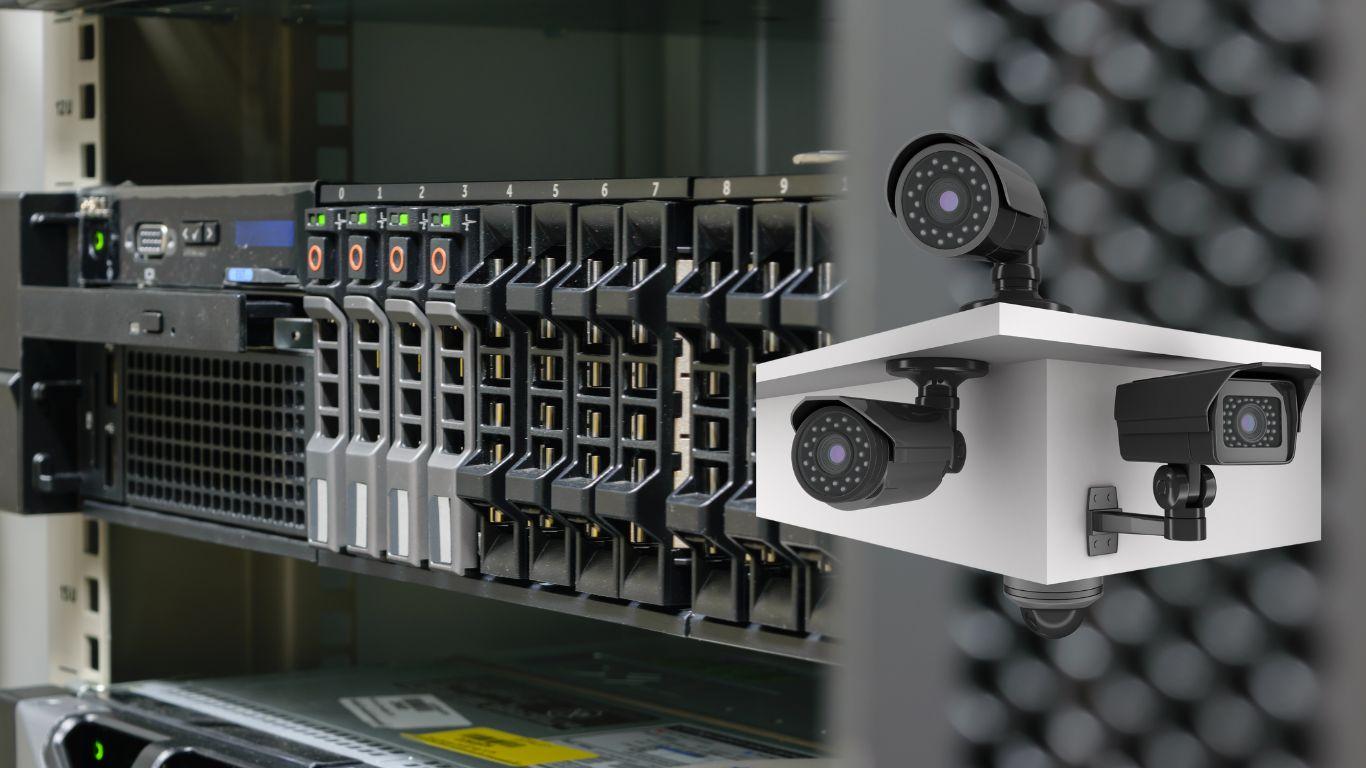RAID Technology in CCTV Systems Leave a comment
RAID (Redundant Array of Independent Disks) Technology in CCTV Systems
In the world of Closed-Circuit Television (CCTV), RAID (Redundant Array of Independent Disks) is a critical technology that enhances data storage reliability, speed, and scalability. RAID is commonly implemented in CCTV systems to safeguard video data, ensuring that footage is not only securely stored but also readily accessible, even if one or more storage drives fail. This is essential in high-stakes environments, such as government facilities, banks, and retail establishments, where video evidence is vital.
This article explores RAID technology’s types, functions, and benefits in CCTV systems, aiming to provide a comprehensive understanding of why and how RAID technology enhances security system performance.
1. What is RAID in CCTV?
RAID, or Redundant Array of Independent Disks, is a data storage technology that combines multiple hard drives into a single system to increase data redundancy and/or performance. In a CCTV setup, RAID is used to safeguard video data against potential hardware failures and ensure data integrity. This is crucial in video surveillance, where continuous recording is required and footage loss is unacceptable.
RAID achieves data redundancy by mirroring or distributing data across multiple hard disks. Different RAID levels (RAID 0, 1, 5, 6, 10, etc.) offer various configurations of redundancy, speed, and storage capacity, making it versatile and adaptable to various storage needs.
2. Types of RAID Configurations for CCTV Systems
Each RAID level has its own unique strengths and weaknesses, making some RAID configurations more suitable than others for CCTV applications. Here’s an overview of common RAID levels used in CCTV systems:
- RAID 0 (Striping): Splits data across multiple disks, increasing speed but with no redundancy. If one drive fails, all data is lost. It is generally not recommended for CCTV, as data loss is a high risk.
- RAID 1 (Mirroring): Data is duplicated across two or more disks, providing full redundancy. If one drive fails, data remains intact on the other drive. RAID 1 is popular in smaller CCTV setups where data integrity is critical.
- RAID 5 (Striping with Parity): Combines data striping with parity information, which is stored across multiple drives. This allows data recovery in case of a single drive failure, making it cost-effective and reliable for medium-sized CCTV systems.
- RAID 6 (Striping with Double Parity): Similar to RAID 5 but with an additional layer of parity, allowing for the failure of up to two drives. RAID 6 is highly recommended for larger CCTV systems that prioritize fault tolerance.
- RAID 10 (1+0, Mirroring and Striping): Combines the benefits of RAID 1 and RAID 0. It stripes data across mirrored pairs, providing both high performance and redundancy. RAID 10 is ideal for large-scale CCTV systems requiring high data reliability and speed.
Each RAID level provides unique benefits based on the type of CCTV deployment and the specific demands of data redundancy, speed, and storage capacity.
3. Advantages of Using RAID in CCTV Systems
RAID technology significantly enhances the performance and reliability of CCTV systems, providing several key benefits:
- Enhanced Data Reliability: With RAID, video data is spread across multiple drives, reducing the likelihood of data loss from drive failure. Even in RAID 1, 5, or 6 configurations, data redundancy ensures footage is retrievable even if a drive fails.
- Increased Storage Capacity and Speed: RAID arrays, especially in levels that use data striping (e.g., RAID 0, 5, 10), can improve write and read speeds, allowing CCTV systems to handle high-resolution video data efficiently. This is particularly useful in scenarios with multiple high-definition cameras.
- Scalability: RAID configurations allow for the addition of more drives as storage needs grow, making them an adaptable solution for expanding CCTV networks without a complete overhaul of the storage infrastructure.
- Continuous Operation with Fault Tolerance: RAID configurations (particularly RAID 5, 6, and 10) provide fault tolerance, allowing the system to continue recording even if one or more drives fail, crucial for environments where constant surveillance is required.
4. RAID in CCTV: Practical Applications
In CCTV systems, RAID is used in various scenarios where data retention, reliability, and speed are crucial:
- Government Facilities and Airports: These locations require constant surveillance with multiple high-resolution cameras. RAID arrays support large volumes of data and provide fail-safe mechanisms that prevent footage loss during drive failures.
- Banks and Financial Institutions: Banks use RAID to ensure secure, uninterrupted recording, even during power outages or system malfunctions. RAID 6 or 10 configurations are common due to their ability to handle large data loads and provide redundancy.
- Retail Stores and Shopping Malls: RAID is essential in retail environments for safeguarding video data that might be needed for dispute resolution or security investigations. RAID 5 or 6 configurations are often chosen due to their balance of redundancy and cost-efficiency.
5. Key Considerations When Implementing RAID in CCTV
When deciding on RAID for a CCTV system, consider the following factors:
- Budget Constraints: Some RAID levels, like RAID 10, require a large number of disks and can be costly. Balance budget considerations with the level of redundancy needed.
- Storage Requirements: The resolution and number of cameras impact storage needs. RAID configurations like RAID 5 or 6 offer a good balance between capacity and redundancy, while RAID 10 is better suited for high-capacity environments.
- Maintenance and Monitoring: RAID systems require regular monitoring to ensure disk health. Drive failure in a RAID array needs prompt attention to avoid complete data loss in certain configurations, especially RAID 5 or RAID 6.
- Data Retention Policies: Some organizations have legal obligations to retain CCTV footage for extended periods. RAID arrays, especially those with high redundancy, help maintain compliance with these policies by providing continuous and reliable storage.
6. Challenges of RAID in CCTV Systems
While RAID offers many benefits, it also comes with some challenges:
- Complexity and Cost: High-redundancy RAID configurations like RAID 6 and RAID 10 require more disks and controllers, increasing both initial costs and complexity in setup and maintenance.
- Potential for Data Loss in Certain Configurations: In RAID 0, for example, there’s no redundancy, so any disk failure leads to data loss. In RAID 5, a second drive failure before recovery can also cause total data loss.
- Rebuilding Time: When a drive fails, rebuilding the RAID array can be time-consuming, especially in large systems, during which system performance might be impacted.
Conclusion
RAID technology has become a crucial component in modern CCTV systems, enabling secure and reliable video storage that can withstand drive failures. By choosing an appropriate RAID level, organizations can meet their specific storage, speed, and redundancy needs, ensuring continuous, uninterrupted surveillance. Despite its challenges, the benefits of RAID in enhancing data security, scalability, and efficiency make it an invaluable tool for robust CCTV systems. For those implementing or upgrading CCTV systems, understanding RAID configurations is essential to making informed choices that align with operational needs and budget constraints.

